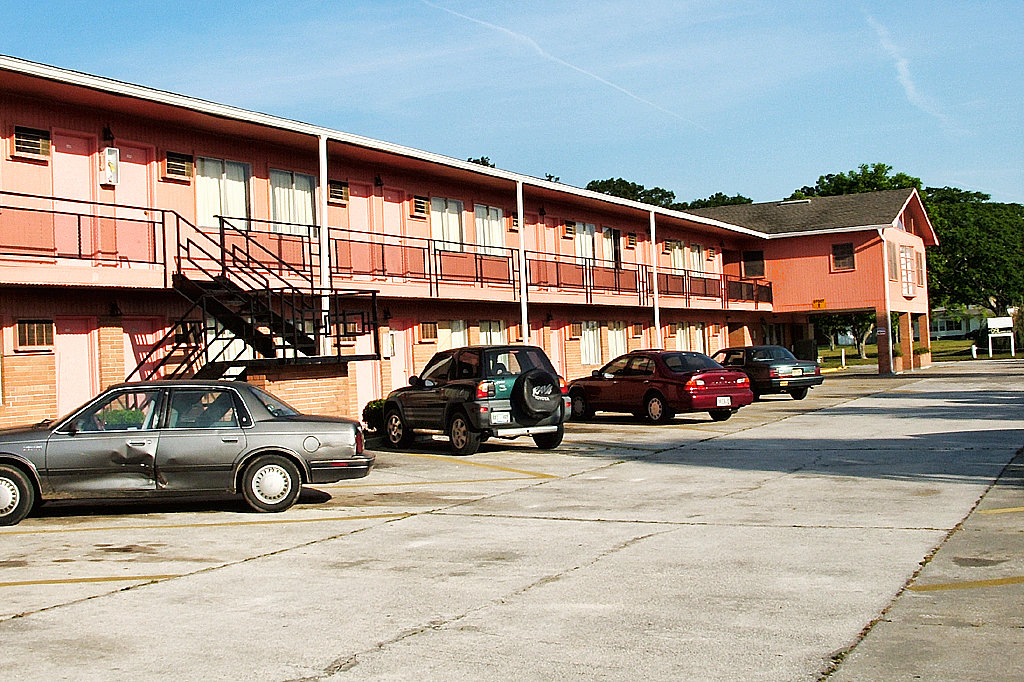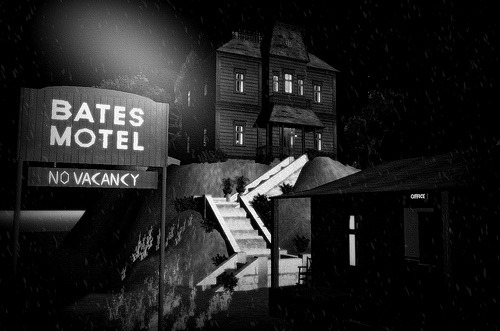
Motels are typically constructed in an 'I'- or 'L'- or 'U'-shaped layout that includes guest rooms, an attached manager's office, a small reception and, in most motels, a swimming pool, some cases, a small diner. A motel could range from a small single story to a six-floor high rise. form. The Post-war motels, especially in the early 1950s, sought more visual distinction, often featuring eye-catching colorful neon signs which employed themes from popular culture, ranging from Western imagery of cowboys and Indians to contemporary images of spaceships and atomic era iconography. U.S. Route 66 is the most popular example of the "neon era". Many of these signs remain fully intact to this day.
Motels differ from hotels in their location along highways,
as opposed to the urban cores favored by hotels, and their orientation to the
outside (in contrast to hotels whose doors typically face an interior hallway).
Motels almost by definition include a parking lot, while older hotels were not
usually built with automobile parking in mind.

The Bates Motel is an important part of Psycho, a 1959 novel by Robert Bloch and Alfred Hitchcock's 1960 film, Psycho. Film sequels, Psycho II and Psycho III, also feature the motel as does the 1987 television movie, Bates Motel. The motel makes appearances in Psycho IV: The Beginning, but is not featured as much as in previous films. The Bates Motel returned to prominence in the 1998 remake of the original film.

The scenario of an isolated motel being operated by a serial
killer, whose guests subsequently become victims, has been exploited in a
number of other horror films, notably Motel Hell (1980) and Mountaintop Motel
Massacre (1986). More recently, the genre has been revived with such films as
Mayhem Motel(2001), Murder Inn (2005), Vacancy (2007), and its direct-to-video
prequel, Vacancy 2: The First Cut (2009).
Several of these horror films also incorporate the sub-theme
of voyeurism, whereby the motel owner spies on (or even films) the sexual
exploits of the guests. This plays on the long-established connotations of
motels and illicit sexual activity, which has itself formed the basis for
numerous other films, variously representing the thriller, comedy, teen film
and sexploitation genres. Stephen C. Apostolof's Motel Confidential (1967) and
the porn film Motel for Lovers(1970) were two notable early examples. More
recent manifestations include Paradise Motel (1985), Talking Walls (1987),
Desire and Hell at Sunset Motel (1991) and the Korean films Motel Cactus(1997)
and The Motel (2005).

Motels have also served as a haven for fugitives from the
law. In the past, the anonymity and a simple registration process helped
fugitives to remain ahead of the law. However, several changes have reduced the
capacity of motels to serve this purpose. Credit card transactions, which in
the past were more easily approved and took days to report, are now approved or
declined on the spot and are instantly recorded in a database, thereby allowing
law enforcement access to this information. Some motels that are located in
low-income areas may be places of high crime rates, such as drugs,
prostitution, or other serious crimes. These motels would have daily to monthly
rates.

Im liking the idea and I'm liking the last image. If you can pull it off it'll look grate. Push forward and get it done!
ReplyDelete